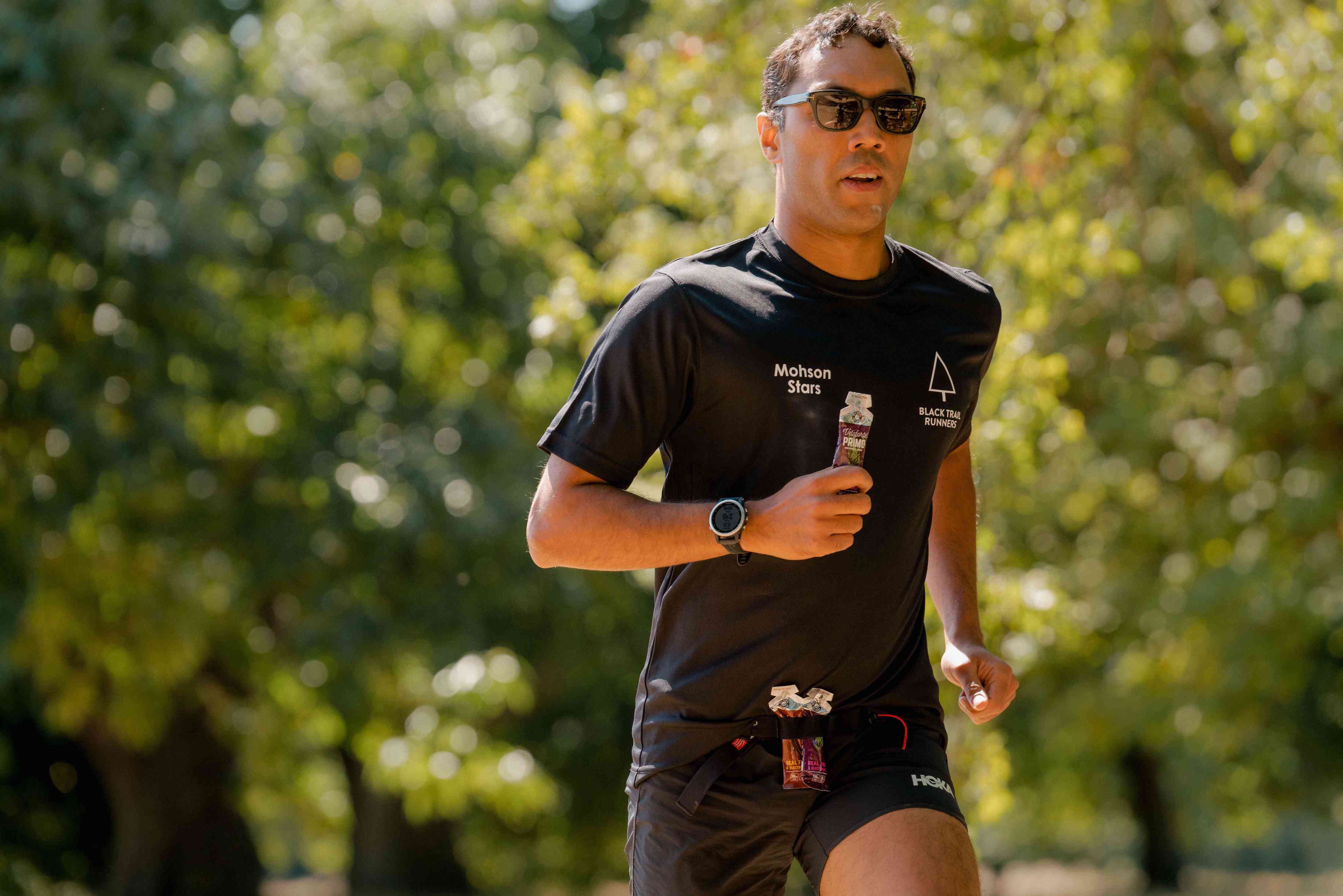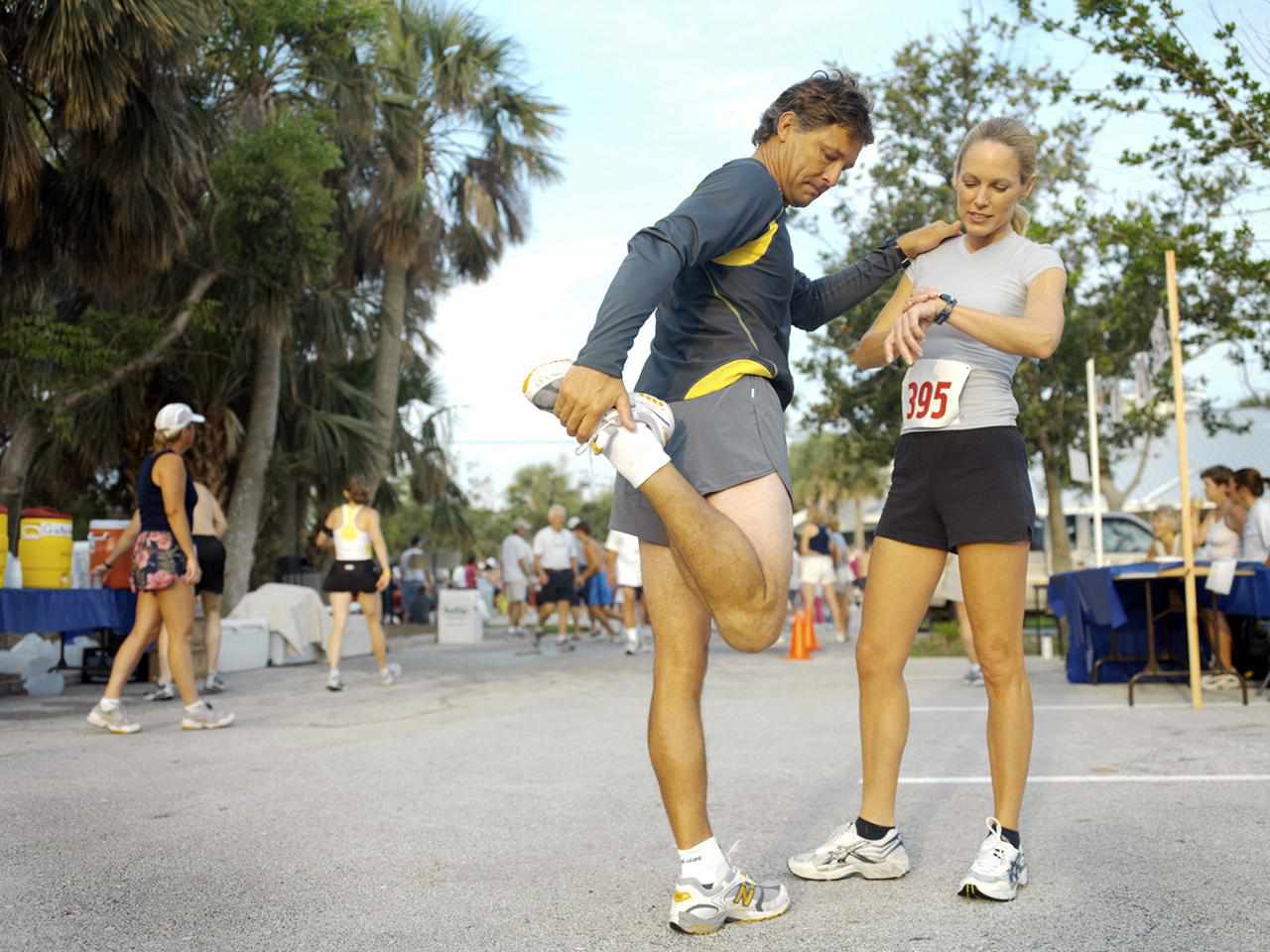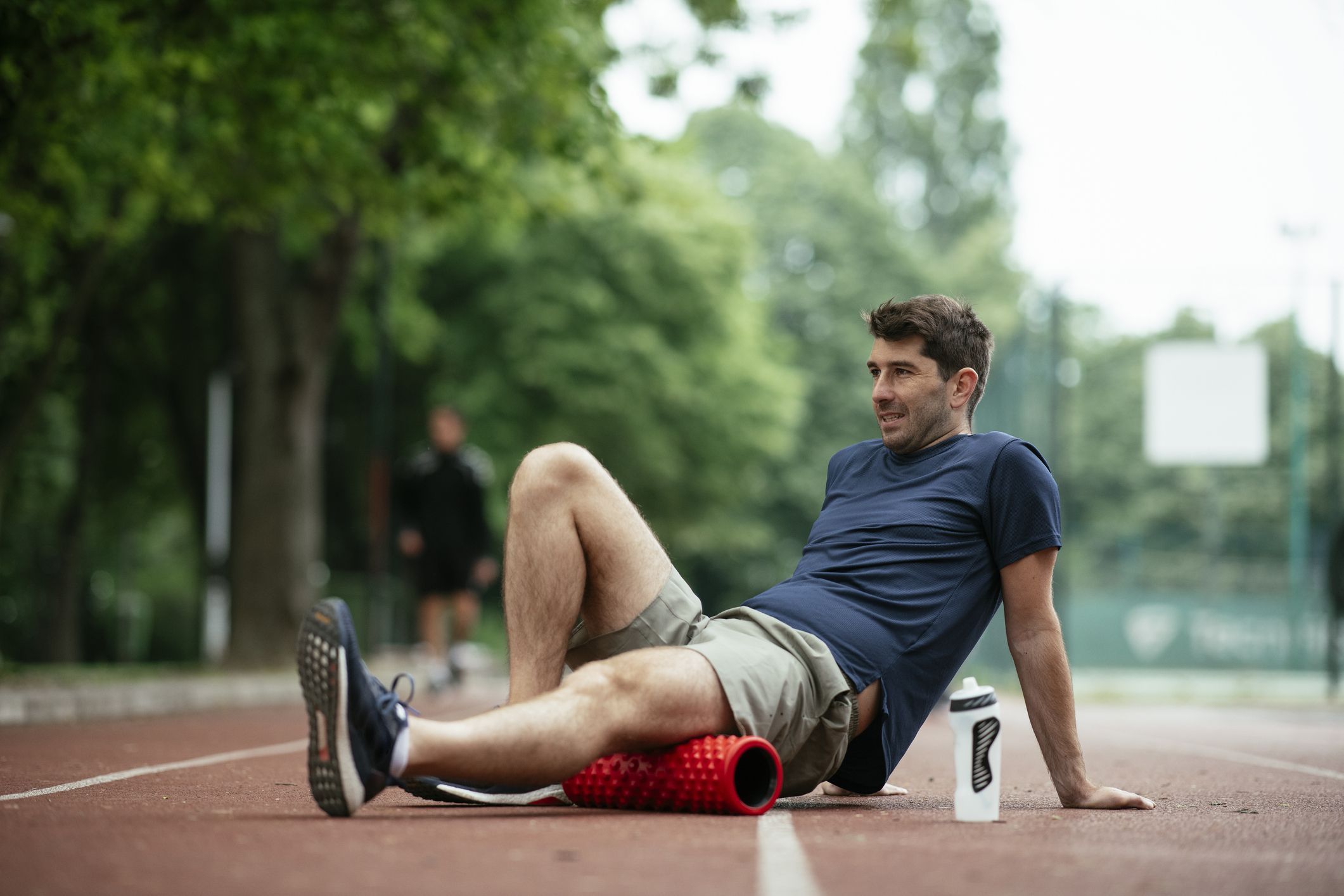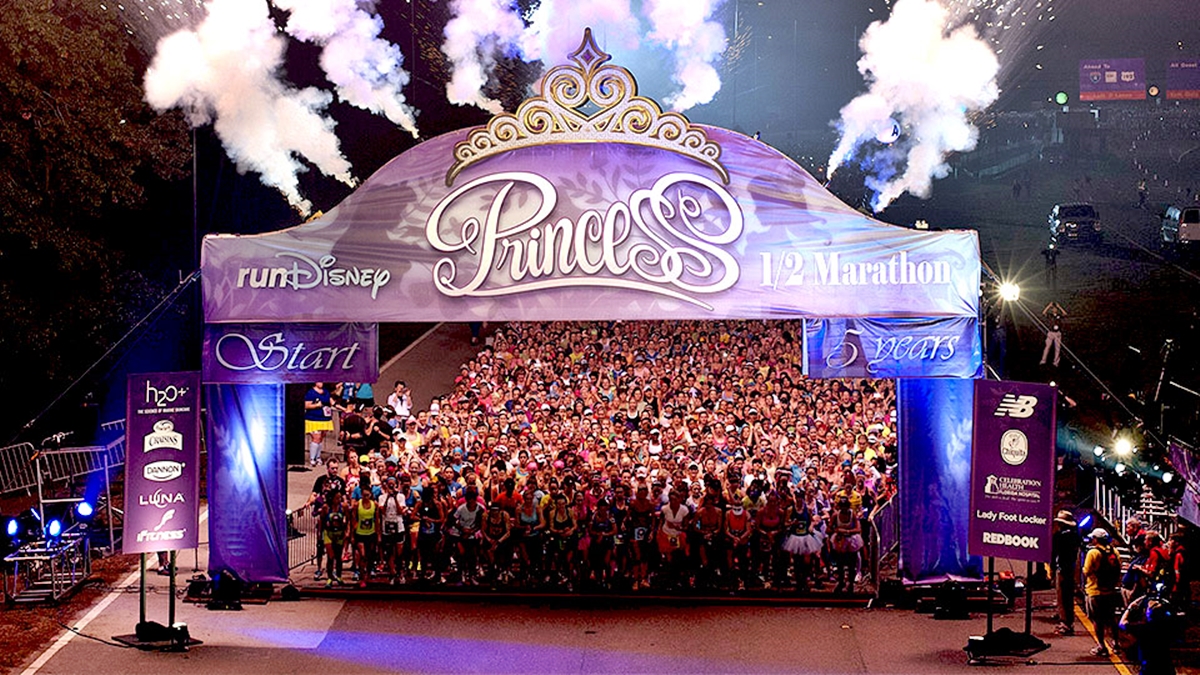

Featured
How Long To Train For A Half Marathon
Modified: January 22, 2024
Train smart and efficiently for your upcoming half marathon with our featured training program. Get ready to conquer your race in no time!
Introduction
Training for a half marathon is an exciting and challenging endeavor. Whether you’re a beginner looking to achieve a personal fitness goal or an experienced runner aiming to improve your race time, having a well-structured training plan is essential. But how long does it actually take to train for a half marathon? The answer to this question varies depending on several factors, including your current fitness level, running experience, and personal goals.
For beginners, it’s important to start with a realistic expectation of the training timeline. On average, it takes about 12-16 weeks to train for a half marathon if you are starting from scratch. This timeframe allows your body to gradually adapt to the demands of long-distance running while minimizing the risk of injury. However, it’s worth noting that individual progress can vary, and it’s important to listen to your body and make adjustments as necessary.
Intermediate runners who have already completed a few half marathons might choose to follow a slightly shorter training plan, typically around 8-12 weeks. This assumes that you have a solid foundation of cardiovascular fitness and are familiar with the basic elements of half marathon training, such as long runs, tempo runs, and speed workouts. The focus here is on building endurance and improving race pace.
Advanced runners who are aiming for a personal best time or have specific performance goals may require a shorter training period of 6-8 weeks. These individuals are likely already accustomed to higher mileage and have a well-established training routine. The emphasis in this shorter timeframe is on sharpening speed and race-specific conditioning to reach peak performance on race day.
It’s important to mention that these training timelines are general guidelines and can be adapted to suit individual preferences and circumstances. It’s always a good idea to consult with a coach or training professional to create a personalized training plan that takes into consideration your unique strengths, limitations, and schedule.
Factors Affecting Training Time
Several factors can affect the length of time it takes to train for a half marathon. Understanding these factors can help you plan and adjust your training schedule accordingly. Here are some key factors to consider:
1. Current Fitness Level: Your starting fitness level plays a significant role in determining how long it will take to train for a half marathon. If you’re already physically active and have a good base level of cardiovascular fitness, you may need less time to prepare compared to someone who is starting from a sedentary lifestyle.
2. Running Experience: If you’re an experienced runner who has completed multiple races, you may have a better understanding of your body’s responses to training and a stronger foundation of endurance. This experience can help you progress faster through your training plan.
3. Time Commitment: The amount of time you can dedicate to training each week will impact the length of your training plan. Generally, a higher time commitment allows for more gradual and progressive mileage increases, reducing the risk of overtraining or injury.
4. Goals: Your personal goals for the half marathon can influence your training time. If your aim is simply to complete the race, your training plan may be less intense and shorter in duration. However, if you have specific time goals or performance targets, you may require a longer training period to focus on speed work and endurance.
5. Injury History: If you have a history of running-related injuries, it’s crucial to factor this into your training timeline. Allowing extra time for injury prevention exercises, cross-training, and rest days can help minimize the risk of re-injury and ensure a safe and effective training program.
It’s important to remember that every individual is unique, and these factors can interact differently for each person. Be realistic about your starting point and be prepared to make adjustments to your training plan based on your circumstances. Consulting with a running coach or experienced runner can provide valuable insights and guidance tailored to your specific needs.
Beginner Training Plan
If you’re new to running or have little experience with long-distance running, a well-structured beginner training plan is essential for preparing for a half marathon. Here’s a general outline of a beginner training plan that spans around 12-16 weeks:
- Build Your Base: Start by gradually increasing your running mileage. Aim for three to four runs per week, including a mix of shorter runs and one long run. Focus on building endurance and getting comfortable with longer distances over time.
- Include Cross-Training: Incorporate cross-training activities, such as swimming, cycling, or strength training, into your schedule. This helps to reduce the risk of overuse injuries and provides variety to your training routine.
- Interval Training: Introduce interval training sessions to improve your speed and endurance. These sessions involve alternating between periods of higher intensity running and recovery periods of lighter jogging or walking.
- Long Runs: Gradually increase the distance of your long runs each week, aiming to reach a distance slightly longer than the half marathon itself at least once during training. This helps to build mental and physical endurance.
- Tapering: In the last two weeks leading up to the race, gradually reduce your mileage to allow your body to recover and prepare for race day. This process, known as tapering, helps ensure you’re in peak condition come race day.
Throughout your training, it’s essential to listen to your body and be mindful of any signs of fatigue or injury. Rest and recovery days are just as important as training days, as they allow your body to repair and adapt to the training stimulus. Incorporate stretching, foam rolling, and other recovery techniques into your routine to promote muscle relaxation and prevent injury.
Remember, this beginner training plan should serve as a general guideline. It’s important to personalize it based on your fitness level, time availability, and any specific needs or limitations you may have. Consulting with a running coach or experienced runner can provide valuable guidance and help tailor the plan to your abilities.
Intermediate Training Plan
If you’ve completed a few half marathons and have a solid foundation of running, an intermediate training plan can help you push your limits and improve your race performance. Here’s a general outline of an intermediate training plan that spans around 8-12 weeks:
- Assess Your Fitness: Start by evaluating your current fitness level and race results from previous half marathons. Identify areas for improvement and set specific goals that you want to achieve.
- Incorporate Speed Workouts: Include one or two speed workouts each week, such as tempo runs or intervals. These workouts help improve your running economy and increase your race pace.
- Long Runs and Progression Runs: Continue with long runs, gradually increasing the distance each week. Additionally, incorporate progression runs where you gradually increase the pace throughout the run to simulate race conditions.
- Hill Training: Include hill workouts to improve your leg strength, endurance, and running economy. Find a challenging hill and incorporate hill repeats into your training plan.
- Strength Training: Make strength training a regular part of your routine. Focus on exercises that target your core, lower body, and upper body, enhancing overall muscular strength and endurance.
- Rest and Recovery: Ensure you incorporate rest days into your training plan to allow your body to recover and reduce the risk of overuse injuries. Active recovery activities like yoga or gentle stretching can also aid in recovery.
- Pre-Race Simulations: As you near the end of your training plan, incorporate pre-race simulations to practice race-day strategies, such as fueling and hydration. This helps build confidence and familiarize yourself with race protocols.
Throughout your training, pay attention to your body’s signals and adjust the intensity or mileage as needed. Be mindful of any signs of overtraining or fatigue and make sure to prioritize rest and recovery. Remember to fuel yourself properly with a balanced diet to support your training efforts.
It’s important to note that this intermediate training plan is a general outline. You can modify and customize it based on your specific goals, preferences, and limitations. Consulting with a running coach or experienced runner can provide valuable insights and help you fine-tune your training plan to maximize your performance.
Advanced Training Plan
For experienced runners who have already achieved a respectable level of performance in half marathons, an advanced training plan is designed to push your limits even further. Here’s a general outline of an advanced training plan that spans around 6-8 weeks:
- Evaluate Your Goals: Determine your specific goals for the upcoming half marathon. It could be achieving a new personal best, qualifying for a higher-level race, or targeting a specific time goal.
- High-Intensity Interval Training (HIIT): Incorporate HIIT workouts into your training plan to improve both aerobic and anaerobic fitness. These workouts typically involve short, intense bursts of effort followed by short recovery periods.
- Long Tempo Runs: Include longer tempo runs where you maintain a challenging but sustainable pace, just below your race pace. This helps improve your lactate threshold and race pace performance.
- Overdistance Runs: Incorporate longer runs than the half marathon distance in your training to build endurance and mental toughness. These runs help you develop confidence in your ability to sustain a strong pace for longer periods.
- Interval Training: Continue incorporating interval workouts to improve speed and anaerobic capacity. These workouts typically involve shorter, intense efforts with longer recovery periods.
- Strength and Plyometric Training: Supplement your running with strength training exercises and plyometrics to develop explosive power and muscular strength. Focus on exercises that target your lower body, core, and overall functional strength.
- Active Recovery: Include active recovery sessions, such as easy runs or cross-training activities, to enhance recovery and reduce the risk of overuse injuries. Active recovery helps maintain fitness while allowing your body to repair and adapt.
Throughout your training, prioritize quality over quantity, as advanced training plans often involve higher-intensity workouts. Listen to your body and adjust the intensity or mileage as needed to prevent overtraining and injury. Consistency and discipline are key in an advanced training plan, so be diligent with your workouts and recovery.
Keep in mind that this advanced training plan is a general outline and may need to be modified based on your specific goals and individual circumstances. Consulting with a running coach or experienced runner can provide valuable insights and guidance tailored to your needs, helping you achieve your peak performance on race day.
Tips for Faster Training
When it comes to training for a half marathon, every runner wants to improve their speed and performance. Here are some tips to help you train more efficiently and achieve faster race times:
- Consistency: Consistency is key in training. Stick to your training plan and make running a regular part of your routine. Consistent training allows your body to adapt and improve over time.
- Structured Workouts: Incorporate structured workouts such as interval training, tempo runs, and hill repeats into your training plan. These workouts target specific aspects of your running performance and help improve speed and endurance.
- Strength Training: Include strength training exercises that focus on your lower body, core, and overall muscular strength. Strong muscles can help improve running efficiency and reduce the risk of injury.
- Proper Nutrition: Fuel your body with a balanced diet that includes carbohydrates, protein, and healthy fats. Proper nutrition provides the energy your body needs to perform at its best and aids in recovery.
- Recovery and Rest: Allow for proper rest and recovery between training sessions. Overtraining can lead to fatigue and injury, so listen to your body and take rest days as needed. Incorporate techniques such as stretching, foam rolling, and massage to aid in recovery.
- Gradual Progression: Avoid sudden increases in mileage or intensity, as this can increase the risk of injury. Gradually increase your mileage or intensity to allow your body to adapt and minimize the risk of overuse injuries.
- Mental Training: Train your mind as well as your body. Develop mental strategies to stay focused and motivated during training and on race day. Visualization, positive self-talk, and setting achievable goals can help enhance your performance.
- Proper Equipment: Invest in a good pair of running shoes that provide the right support and cushioning for your feet. Comfortable and properly fitting gear can make a significant difference in your performance.
- Race-Specific Training: Incorporate race-specific training into your plan. Simulate race conditions during some of your long runs or workouts to practice pacing, fueling strategies, and mental resilience.
Remember, training for a half marathon is a journey that requires dedication, patience, and perseverance. It’s important to understand that improvement takes time, and everyone progresses at their own pace. Celebrate small victories along the way and trust in your training. With consistent effort and smart training strategies, you can achieve faster race times and reach your running goals.
The Importance of Rest and Recovery
When it comes to half marathon training, it’s easy to get caught up in the excitement and push yourself to your limits. However, one aspect that many runners often overlook is the importance of rest and recovery. Taking the time to rest and recover properly is critical for improving performance and reducing the risk of injury. Here’s why rest and recovery should be an integral part of your training plan:
- Muscle Repair and Growth: Rest allows your muscles to repair and rebuild themselves after the stress of training. When you exercise, small microscopic tears occur in your muscles. Proper rest gives your body the opportunity to repair these tears and build stronger, more resilient muscles.
- Prevention of Overtraining: Overtraining is a condition that can lead to decreased performance, fatigue, and increased risk of injury. Rest days and recovery periods help prevent overtraining by giving your body the time it needs to recuperate and regain strength before the next training session.
- Injury Prevention: Rest and recovery are crucial for injury prevention. When you train intensely and consistently without allowing for proper recovery, you place excessive stress on your muscles, tendons, and joints, increasing the risk of overuse injuries. Giving your body sufficient rest time allows for tissue repair and reduces the likelihood of injury.
- Mental Refreshment: Rest days play a significant role in mental rejuvenation. Intense training can take a toll on your mental well-being, leading to burnout or a lack of motivation. Taking regular rest days helps to recharge your mental energy, boost your motivation, and enhance your overall enjoyment of the training process.
- Performance Enhancement: Rest and recovery periods actually contribute to improved performance. When your body is well-rested, you’ll have more energy, better focus, and improved muscular strength and endurance. Giving your body adequate time to recover allows you to perform at your best during your training sessions and on race day.
Incorporating rest and recovery into your training plan involves more than just taking a day off. It also includes practices like proper nutrition, hydration, and quality sleep. Prioritize getting enough sleep to allow your body to repair and regenerate. Focus on eating a balanced diet rich in nutrients to fuel your recovery process. Hydration is also crucial, as it helps to flush out toxins and supports optimal muscle function.
Remember, rest and recovery are not signs of weakness or laziness but vital components of your training program. By incorporating regular rest and recovery into your training plan, you’ll promote better performance, reduce the risk of injury, and achieve long-term success in your half marathon training journey.
Common Mistakes to Avoid
Training for a half marathon requires dedication and careful planning. While it’s crucial to focus on proper training techniques, it’s equally important to be aware of common mistakes that can hinder your progress. By avoiding these pitfalls, you can optimize your training and improve your chances of success. Here are some common mistakes to avoid:
- Skipping Rest Days: Rest days are essential for recovery and injury prevention. Avoid the temptation to push through fatigue and neglect rest days. Allow your body time to repair and recharge, as this is when improvements occur.
- Increasing Mileage Too Quickly: Gradual and progressive mileage increases are crucial to avoid overuse injuries. Pushing your mileage too rapidly can lead to stress fractures, tendonitis, and other common running injuries. Follow a structured training plan and listen to your body’s signals.
- Neglecting Strength Training: Many runners overlook the importance of strength training. Incorporating strength exercises into your routine can improve running economy, prevent muscle imbalances, and reduce the risk of injury. Focus on exercises that target the key muscles used in running.
- Ignoring Proper Nutrition: Nutrition plays a vital role in supporting your training efforts. Fuelling your body with the right balance of carbohydrates, protein, and fats is crucial for optimal performance and recovery. Don’t overlook nutrition and hydration as they directly impact your training outcomes.
- Failure to Listen to Your Body: It’s important to recognize the difference between challenging yourself and pushing your limits too far. Ignoring pain, fatigue, or other warning signs can lead to burnout or injury. Always listen to your body and make adjustments as needed. Rest and seek professional advice when necessary.
- Neglecting Cross-Training: Engaging in cross-training activities such as swimming, cycling, or yoga can provide valuable benefits to your running performance. These activities help build strength, flexibility, and cardiovascular fitness while reducing the impact on your joints.
- Not Practicing Race-Specific Conditions: It’s important to simulate race conditions during training. Neglecting to practice fueling strategies, pacing, and running in various weather conditions can leave you ill-prepared for race day challenges. Incorporate race simulations into your training to better understand your body’s response.
Being aware of these common mistakes and actively avoiding them will significantly enhance your training experience and increase your chances of achieving your goals. Remember, a balanced and well-rounded approach to training is key. Seek guidance from experienced runners or coaches to fine-tune your training plan and make necessary adjustments along the way.
Conclusion
Training for a half marathon requires commitment, discipline, and careful planning. Whether you’re a beginner embarking on your first race or an experienced runner aiming for a personal best, following a well-structured training plan is essential. Take into consideration your current fitness level, running experience, and personal goals when determining the length and intensity of your training program.
Factors such as consistency, structured workouts, rest and recovery, and proper nutrition all play a vital role in optimizing your training and improving performance. Avoid common mistakes like neglecting strength training, overlooking rest days, or increasing mileage too quickly, as these can hinder your progress and increase the risk of injury.
Regardless of your training level, remember to listen to your body and make adjustments as needed. Balancing intensity with adequate rest, incorporating cross-training activities, and practicing proper nutrition will ultimately contribute to your success as a half marathon runner.
In conclusion, training for a half marathon is both a physical and mental journey. Embrace the challenge, enjoy the process, and celebrate every milestone along the way. With dedication, perseverance, and smart training strategies, you can cross the finish line of your half marathon with a sense of accomplishment and pride. Good luck on your journey to becoming a successful half marathon runner!









